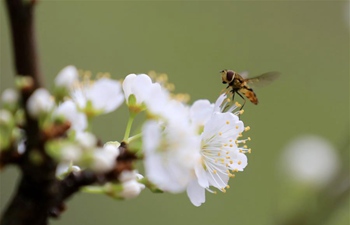GUANGZHOU, March 14 (Xinhua) -- A group of international scientists have sequenced the genome of wild soybeans and compared it with cultivated ones in a study that may benefit the cultivation of the important food crop.
Soybean is widely planted worldwide to provide oil and protein, and researchers say understanding the genome of wild soybeans may provide means to improve traits of their cultivated brothers, such as with drought tolerance and pest resistance.
In an article published in the scientific journal Nature Communications, scientists from Hong Kong, Britain, the United States, Japan, the Republic of Korea and Shenzhen-based gene-sequencing company BGI said they had assembled the wild soybean W05 genome and annotated 55,539 protein-coding genes.
The genome mapping, though not the first time for wild soybeans, is of higher quality thanks to advances in sequencing technologies, allowing scientists to perform a thorough comparative study with the genome of cultivated varieties, said Lam Hon-Ming with the Chinese University of Hong Kong, an author of the article.
The researchers said that in the comparative study they identified a number of genomic differences between wild and cultivated soybeans, including one "genomic inversion" associated with the change of seed coat colors from dark to yellow during soybean domestication.
Researchers also noticed a reduction in the number of genes encoding antinutrient proteins, which interfere with human absorption of certain nutrients, in cultivated soybeans, possibly a result of human selection.
BGI said it hoped the study would facilitate further studies on wild soybeans and cultivated soybeans, leading to the development of better varieties and expanding cultivation.

















